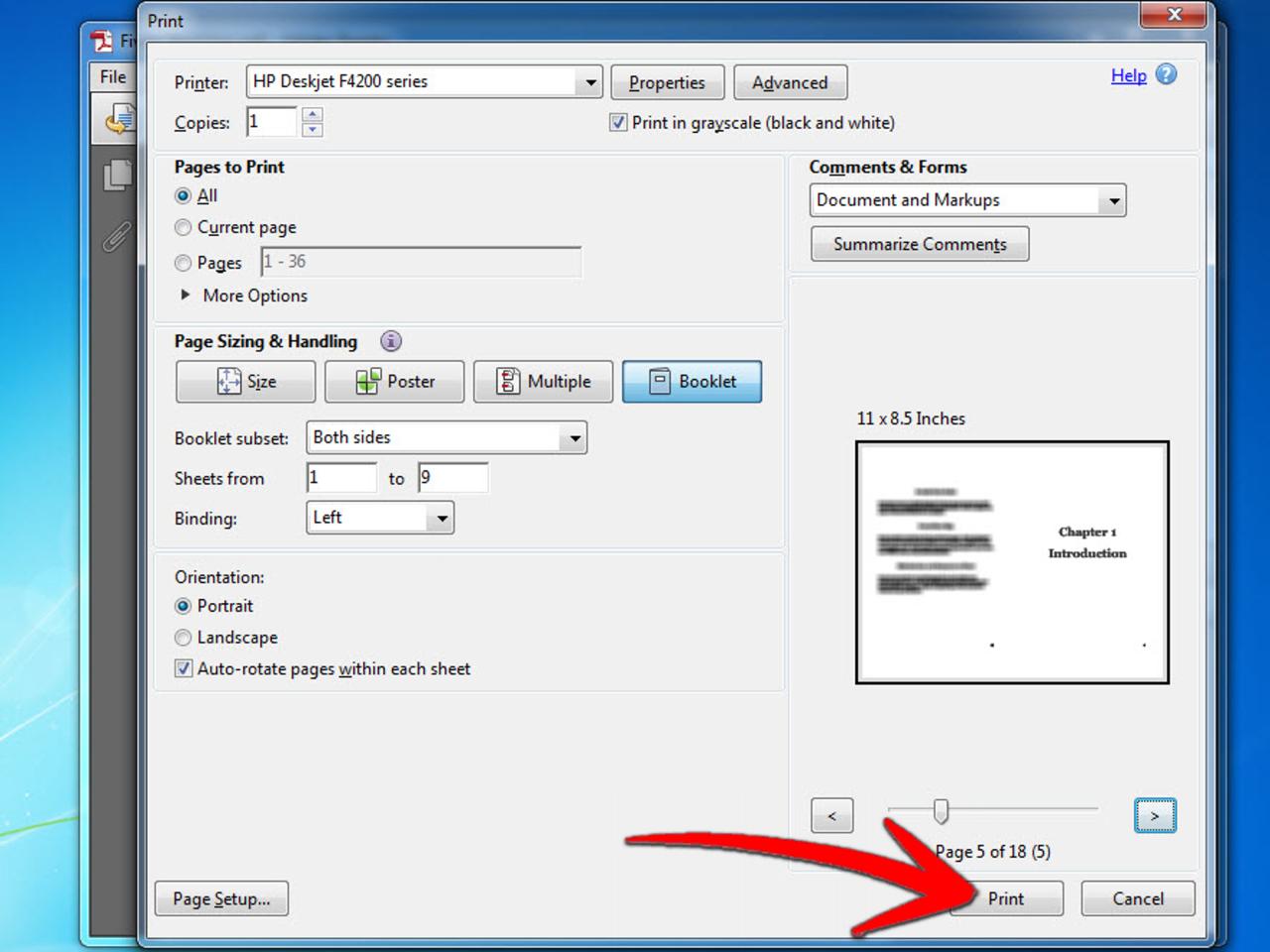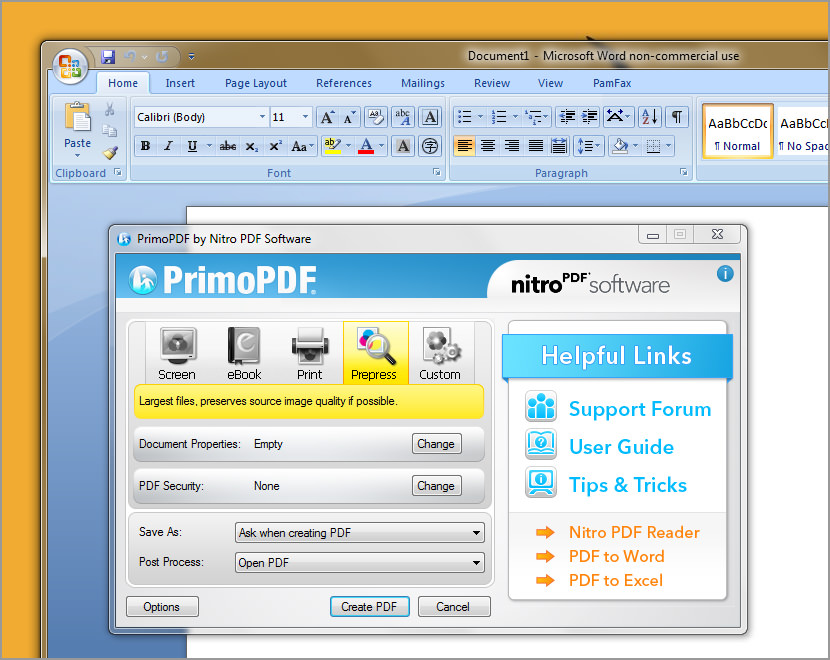PDF printers set the stage for a seamless digital document workflow, offering users the power to create, share, and manage files with unmatched flexibility and security. These versatile tools transcend the traditional limitations of physical printing, allowing you to convert any digital content into a high-quality PDF file.
Table of Contents
From simple text documents to complex spreadsheets and multimedia presentations, PDF printers empower users to capture and preserve the essence of their work in a universally accessible format. They provide a robust solution for preserving formatting, ensuring compatibility across platforms, and safeguarding sensitive information.
Benefits of Using a PDF Printer

PDF printers offer a versatile and reliable way to create and manage documents. They provide numerous advantages that streamline document creation, enhance security, and facilitate seamless collaboration.
Document Creation
PDF printers empower users to create professional-looking documents from various sources, including web pages, emails, and even images. They allow users to combine different content types into a single, unified document, making it easier to organize and share information.
Document Security
PDF printers offer robust security features that protect sensitive information. They allow users to password-protect documents, restrict printing and editing permissions, and even embed digital signatures to ensure authenticity and prevent tampering.
Document Sharing and Collaboration
PDF printers facilitate seamless document sharing and collaboration. They create files that can be easily shared across different platforms and devices without compromising formatting or losing content. Users can also use PDF printers to collaborate on documents, as they allow for multiple users to annotate, comment, and track changes within the same file.
PDF Printer Features and Functionality
PDF printers offer a range of features and functionalities that enhance document management and workflow efficiency. These features enable users to customize document output, enhance security, and streamline document sharing and collaboration.
Feature Comparison
A PDF printer’s features can be categorized into security, compression, and page layout options. The table below compares these features across different PDF printer software.
| Feature | Feature Description | Example 1 | Example 2 |
|—|—|—|—|
| Security | Encrypts PDF files with passwords or digital signatures to prevent unauthorized access. | Adobe Acrobat Pro offers advanced security features like 256-bit encryption and digital signatures. | Foxit PhantomPDF provides password protection, permissions control, and digital signature capabilities. |
| Compression | Reduces file size by compressing images and text, making it easier to share and store documents. | PDF printers typically employ compression algorithms like JPEG2000 or ZIP to minimize file sizes. | Some PDF printers allow users to select compression levels based on their needs, such as high-quality for print-ready documents or low-quality for online viewing. |
| Page Layout Options | Enables users to control page orientation, margins, and other layout settings to optimize document appearance. | Users can choose between portrait and landscape orientation, adjust margins, and add headers and footers. | PDF printers may offer advanced page layout features like page numbering, watermarks, and custom page sizes. |
Print Quality, Paper Size, and Margins
Settings like print quality, paper size, and margins significantly impact the final appearance and functionality of a PDF document.
* Print Quality: The print quality setting determines the resolution and sharpness of the output. High-quality settings produce sharp and detailed documents suitable for printing, while low-quality settings are more suitable for online viewing or sharing.
* Paper Size: This setting defines the dimensions of the printed page. Common paper sizes include Letter, A4, and Legal. Choosing the appropriate paper size ensures the document fits correctly on the intended paper.
* Margins: Margins define the blank space around the edges of the printed document. Adjusting margins can affect the document’s layout and readability.
Document Editing and Annotation, Pdf printer
PDF printers are versatile tools for document editing and annotation.
* Editing: Some PDF printers allow users to edit text, images, and other content within the document. This includes features like adding, deleting, and modifying text, resizing images, and rearranging page order.
* Annotation: PDF printers provide a range of annotation tools, enabling users to highlight text, add comments, draw shapes, and insert signatures. Annotations are useful for collaboration, feedback, and marking up documents.
Integration with Other Applications

PDF printers are designed to seamlessly integrate with popular operating systems and software, making them versatile tools for a wide range of workflows. This integration allows users to easily convert documents from various applications into PDF format, enhancing document sharing, collaboration, and security.
PDF printers function as virtual printers, enabling users to print documents from any application that supports printing. This includes word processors, spreadsheets, presentation software, image editors, and web browsers. By selecting the PDF printer as the destination for printing, users can create PDF files from any document they can print.
Operating System Compatibility
PDF printers are compatible with major operating systems, including Windows, macOS, and Linux. They function as standard printer drivers, allowing users to select them from the print dialog box in any application. This ensures that users can easily create PDF files regardless of their operating system.
Workflow Integration
PDF printers can be integrated into various workflows, simplifying document management and collaboration. For instance, a user can create a PDF file from a Microsoft Word document, add a digital signature using a dedicated software, and then share it securely with colleagues. Similarly, a user can print a webpage from a web browser as a PDF, preserving the layout and formatting of the page for later reference.
Plugins and Extensions
Plugins and extensions for popular applications can further enhance the functionality of PDF printers. These add-ons provide additional features, such as the ability to set specific PDF parameters, encrypt PDF files, or convert multiple documents into a single PDF. For example, a plugin for Microsoft Word can allow users to create PDF files with password protection, while an extension for Google Chrome can enable users to convert entire websites into PDF files.
Troubleshooting Common PDF Printer Issues
While PDF printers are generally reliable, you might encounter some common issues. This section will guide you through troubleshooting these problems, offering solutions and tips to optimize your PDF printer experience.
Common PDF Printer Issues and Solutions
Here are some common issues you might encounter with PDF printers and their solutions:
- Blank or Empty PDF Files: If you find your PDF files are empty, the issue might stem from a corrupted file, insufficient printer memory, or a problem with the PDF printer software. To address this, try saving the document in a different format, restarting the printer, or reinstalling the PDF printer software.
- Incorrect Formatting or Layout: Sometimes, PDF files might not render correctly, leading to formatting or layout issues. This can occur due to compatibility problems between the software you’re using and the PDF printer. To fix this, ensure you have the latest version of the PDF printer software and try adjusting the printer settings.
- Printing Errors: Printing errors can manifest in various ways, such as “out of memory” messages or printing delays. These issues might be caused by insufficient printer memory, a faulty printer driver, or a corrupted PDF file. Restarting the printer, updating the printer driver, or trying to print a different file can help resolve these errors.
- Slow Printing Speeds: Slow printing speeds can be frustrating. This might occur due to insufficient computer resources, a complex PDF file, or network issues. To improve printing speeds, close unnecessary programs, optimize your PDF file, or check your network connection.
Optimizing PDF Printer Performance
To enhance your PDF printer’s performance, consider these tips:
- Use a Dedicated PDF Printer: A dedicated PDF printer, specifically designed for PDF creation, can offer faster printing speeds and better compatibility with various file formats.
- Install the Latest Drivers: Keeping your PDF printer drivers up-to-date ensures optimal performance and compatibility. Regularly check for driver updates.
- Minimize Background Processes: Close unnecessary programs and processes running in the background to free up computer resources and enhance printing speeds.
- Optimize PDF Files: Reduce the file size of complex PDF files by removing unnecessary elements, such as images or embedded fonts, to improve printing speeds.
Resolving Compatibility Issues
Compatibility issues can arise between different software programs and the PDF printer. To address these problems:
- Check Software Compatibility: Ensure the software you’re using to create or print PDF files is compatible with your PDF printer. Consult the software documentation or manufacturer’s website for compatibility information.
- Use a Universal PDF Printer: Consider using a universal PDF printer that supports various file formats and software programs. This can minimize compatibility issues.
- Convert Files: If compatibility issues persist, convert the file to a compatible format before printing. Tools like online converters can assist in this process.
Outcome Summary

As we delve deeper into the realm of PDF printers, we uncover a world of possibilities for streamlining document workflows and enhancing digital communication. Whether you’re a professional seeking to share confidential reports, a student creating presentations, or simply someone who needs to archive important files, PDF printers offer a comprehensive solution for managing your digital assets with ease and efficiency.
A PDF printer is a great tool for creating printable documents, but sometimes you need a more interactive way to visualize your ideas. For interior design projects, for example, you might want to use a tool like autodesk homestyler to create 3D models and then use a PDF printer to share your designs with clients.
This allows you to combine the flexibility of digital design with the convenience of printable documents.
